Whether you’re looking for a personal loan, car loan, mortgage, savings account or investment option, understanding bank interest rates in Canada will impact what the best options are for your money.
In this guide, we’ll show you how to compare bank interest rates and high-interest savings accounts from other financial institutions to get the best bang for your buck.
Key takeaways
- Interest rates in Canada are linked to the Bank of Canada benchmark rate.
- When the Bank of Canada benchmark rate goes down, both lending interest rates (APR) and savings rates (APY) also go down.
- Whether you’re looking for a good savings rate or lending rate, always shop around and compare options before signing up.
What is the Bank of Canada interest rate?
The current Bank of Canada benchmark interest rate is 2.75%. That results in a current bank prime rate offered by banks across Canada of 4.95%. The next time we’ll hear about any potential rate changes from Canada’s central bank will be on April 16, 2025.
When will the Bank of Canada lower interest rates?
The Bank of Canada has begun lowering rates, with rate decreases of 0.25% to 0.5% percentage points throughout 2024 and into the beginning of 2025. According to econometric models, it’s predicted that Canada’s overnight interest rate will likely drop to 2.50% by March 2026.
Bank of Canada historical interest rates
The Bank of Canada increased its benchmark interest rate seven times in 2022 and three times in 2023 after holding it steady in 2021 following lower rates during the pandemic. That led us to see the highest Bank of Canada benchmark rate in over two decades. In the first part of 2024, rates were held steady, and then were finally lowered in the second half of the year and into 2025.
What are the different types of interest rates?
Banks in Canada describe interest rates differently depending on the financial product. Here’s a breakdown of the two types of interest rates you’ll come across in Canada:
- APR.
This is the bad kind of interest. The APR (annual percentage rate) is the amount of interest you have to pay each year on your debts, for example your mortgage. To save the most money on your mortgages or loans, look for loans and credit cards with a low APR. - APY.
This is the good kind of interest. APY stands for annual percentage yield, and it’s the amount of interest that gets paid to you each year on your savings. It can also be called earned annual interest (EAR). To help your money grow faster, look for savings accounts and investments with a high APY. Compare savings account interest rates.
Whether you’re earning or paying interest, the interest rate you’re offered will be one of these two options:
- Fixed-rate.
These interest rates stay the same for a predetermined period of time — like until you’re finished paying of a loan. With a fixed interest rate, you get the peace of mind of knowing exactly how much your interest rate will be. - Variable-rate.
These interest rates may fluctuate over time. Banks adjust their prime rate a few times throughout the year based on how the Bank of Canada’s policy interest rate changes. This means you’ll get lower interest rates if the prime rate falls and higher rates should when the prime rate rises again.
When financial institutions calculate the interest on your savings, investment or loan, they’ll use one of two methods based on the type of interest you’re offered:
- Compound interest.
This is calculated based on the principal plus interest you’ve already accumulated. - Simple interest.
This is calculated based only on the principal.
How is interest charged on different financial products?
Interest works differently depending on the type of product you have. A good rule of thumb is that savings accounts and GICs offer an APY, while personal loans, mortgages and credit cards charge APR.
Learn more about what interest rates look like for each product below:
How savings accounts interest rates in Canada work
Interest rates on savings accounts earn you money rather than cost you money. If you have a high-interest savings account, the interest will be variable. That means the financial institution that provides the account can raise or lower your interest rate in line with their prime rate, so the amount of interest you earn could vary from month to month.
Savings account interest is typically calculated daily on your balance and paid into your account monthly. This is referred to as compound interest: the interest payments you earn then go on to earn their own interest.
If you invest in a guaranteed investment certificate (GIC) or term deposit, the interest rate will typically be fixed until the end of the term. This gives you the security of knowing you will get a guaranteed return on your investment. But some GICs come with variable interest rates if you want to benefit from any potential interest rate rises.
Bank savings accounts promos on now
Special offers and high introductory interest rates can be a great way to boost your savings balance. Here are a few Canadian bank interest rate offers available now that have caught our attention:
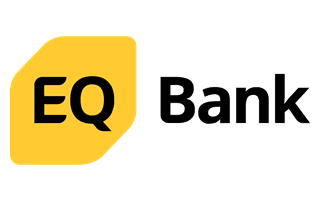
- Earn up to 3.00% interest
- $0 account fee
- No minimum balance required
- No monthly deposit requirements
- CDIC protection up to $100,000
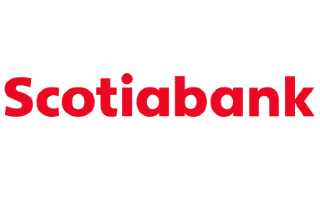
- Earn up to 5.00% for 3 months, 0.55% thereafter
- Can earn interest rate boosts
- No account fee
- No minimum balance required
- CDIC protection up to $100,000
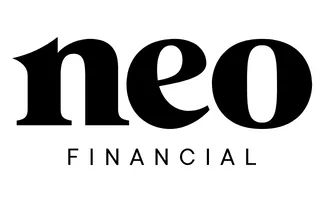
- Earn 3.00% interest on savings
- Open an account instantly
- No minimum account balance
- CDIC protection for balances up to $100,000
Compare bank interest rates in Canada
Where can you find the best savings account interest rates in Canada? Here we’ve summarized details of savings accounts interest rates from the Big Banks as well as challenger banks, fintechs and credit unions.
Finder Score for savings accounts
To make comparing even easier we came up with the Finder Score. Interest rates, account fees and features across 50+ savings accounts and 25+ lenders are all weighted and scaled to produce a score out of 10. The higher the score the better the account - simple.
Types of savings account interest rates from banks in Canada
When you’re comparing bank interest rates on savings accounts, it’s important to be aware that different types of interest rates may apply. These include:
- Bonus interest rate. Some savings accounts pay a base rate of interest, but allow you to earn bonus interest every month that you meet specific requirements. For example, you may be able to earn bonus interest if you deposit $200 into your account each month.
- Introductory interest rate. Some banks offer promotional interest rates to attract new customers. These high promo rates apply for a limited introductory period, such as six months, before the account reverts to a lower standard rate.
- Tiered interest rate. Some high-interest savings accounts have tiered interest rate structures — the higher your balance, the higher your interest rate. The thing to remember with this type of account is that you might not always qualify for the highest advertised rate, so it’s important to read the fine print.
GIC rates in Canada
GIC rates in Canada for a 1-year GIC is 2.70%, for a 3-year GIC is 2.90% and for a 5-year GIC is 3.20% according to the Bank of Canada, which takes this data from the weekly posted rates from the six major chartered banks (as of March 19, 2025).
In Canada, GIC rates are offered as fixed, laddered fixed-rate, variable or market-linked. Your return and the rate you’re offered are dependent both on the type of interest rate structure and term length of the GIC you choose. While GIC rates are often higher than what you could get with a savings account from a standard bank, they won’t offer the same rate of return as you can typically get from investing in stocks and ETFs.
Personal loan interest rates
According to Statistics Canada via the Bank of Canada, the average interest rate for personal loans in Canada is currently 9.32%.
Personal loan interest rates can be fixed or variable annual interest rates. The bank loan interest rate you qualify for will depend on factors such as your credit score and credit history, your income and any existing debts you may have. The lender will also take into account the size of the loan and the loan term when setting your interest rate.
Mortgage interest rates in Canada
The current average interest rate for a mortgage in Canada is 4.88% for uninsured mortgages and 4.80% for insured mortgages.
The weekly posted conventional mortgage rates from the six major chartered banks in Canada are 6.99% for a 1-year mortgage, 6.54% for a 3-year mortgage and 6.49% for a 5-year mortgage, according to the Bank of Canada (as of March 19, 2025, 2025).
Mortgage interest rates can be fixed or variable. Fixed interest rates are guaranteed not to change, whereas variable rates may fluctuate. The interest you’re charged will generally be calculated daily.
Mortgage payments can either be principal and interest — meaning you’re repaying both the interest you’re being charged and the original amount you borrowed — or interest-only. With the latter, you’re only repaying the interest accruing on your debt for a set period, such as five years, before the loan reverts to a principal and interest mortgage.
The impact of interest rate changes on mortgages
When interest rates rise, you pay more on your monthly mortgage repayments. On the flipside, you’ll end up paying less each month if rates fall.
The key interest rate you need to monitor is the Bank of Canada’s policy rate, which is adjusted eight times per year. This is the benchmark rate lenders use when setting interest rates for their mortgages and other loans, so changes to the policy rate are usually soon reflected in home loan rates.
To give you an idea of the impact of interest rate changes in the real world, let’s look at an example. If you have a $500,000 mortgage with a 30-year term and an interest rate of 6%, your monthly payment will be $2,998. But if your interest rate increases by 0.25%, your monthly payment will rise to $3,079 — that’s an extra $81 per month.
Car loan interest rates
The average auto loan interest rate in Canada is currently 7.10%.
Car loan interest rates can be either fixed or variable. The bank car loan interest rate you’re approved for will depend on whether the car is used or new, your credit score and other personal financial factors. To qualify for the lowest auto loan rates – including any 0% financing offers – you’ll have to have an excellent credit score and meet specific criteria.
Credit card interest rates
Credit cards rates vary depending on what features the card offers, but the average card falls somewhere between 15% and 22% APR with most cards charging 19.99%. While it’s possible to find credit cards with variable APRs, the majority of credit cards offered by banks in Canada have a fixed interest rate.
There are two types of interest rates on a credit card: purchase rate and cash advance rate. The purchase rate is what you’re charged when you make purchases on the card, and the cash advance rate is what you’re charged when you withdraw cash at an ATM using the credit card. Credit cards can also offer special interest rates such as introductory 0% rates or balance transfer rates.
How do interest rates impact me?
Bank interest rates determine how long it takes you to pay off debt and build up savings.
When bank interest rates increase, the interest charged on new loans and mortgages is higher and it may take longer to pay off your current debts. That means people generally spend less money and the economy slows down. A perk, however, is that you may get higher savings rates and return on certain investments.
Alternatively, when bank interest rates decrease, banks offer lower rates on loans and mortgages, which means you’ll pay off certain types of debt faster. When that happens, people typically spend more money and the economy grows. The downside of lower interest rates is that you may receive lower rates of return on your savings.
How should I compare bank interest rates in Canada?
Keep the following in mind when searching for the best interest rates in Canada:
- Shop around. Don’t just settle for the savings account offered by your regular bank. Shop around to compare a range of HISAs from traditional as well as challenger banks — you might be surprised by just how much more you could be saving
- The actual rate. Look at how competitive the interest rate is when comparing. The higher the savings account interest rate you get, the quicker you’ll be able to grow your bank balance.
- Fees. Check for any fees that the account or loan has, including upfront and ongoing fees. If you find an option with a competitive interest rate but high fees, calculate whether it’s still the best option.
What affects the interest rate I get on a loan or credit card?
There are also several factors that can affect the rate you get when you take out a loan or credit product. These include:
- Your credit score. Lenders will assess your credit history and credit score to determine if you’re a reliable borrower. Taking steps to improve your credit score can help you qualify for a lower rate.
- Your income. Lenders often have minimum monthly income requirements that you must meet to show you can make on-time loan repayments. A larger income can help you qualify for a lower rate.
- Your employment. If you’ve held down a full-time job for six months or more, you can demonstrate to lenders that you earn a steady income.
- Your existing debts. Lenders will consider your debt-to-income ratio when assessing your ability to make loan payments.
- NSF transactions. Zero NSF transactions on your bank account will help you qualify for a loan and access a lower rate.
While comparing interest rates across products is a good idea, make sure the products you’re comparing are similar. For example, if you compare a rewards credit card to a low-rate credit card with no added perks or features, their interest rates will be quite different.
What are negative interest rates?
One financial policy idea that emerged from the Global Financial Crisis, and again made waves at the height of the pandemic, is implementing negative interest rates. A negative interest rate is an interest rate of less than zero, and the idea behind negative rates is to stimulate a stagnant economy.
Negative interest rates are incentives for banks, encouraging them to lend out their reserves rather than deposit them with central banks and be charged interest. The theory is that this will in turn encourage consumers to borrow more money.
Switzerland was one of the first countries to implement NIRP in the 1970s in an attempt to deter a flood of foreign investment. Following the 2008 recession, Sweden was the first country to begin implementing a negative interest rate, while the European Central Bank (ECB) adopted such a policy in 2014.
A negative interest rate could be a way to stimulate the economy, but so far it isn’t something we’ve tried out in Canada. Economists are divided over whether or not it would be a good idea — it would encourage spending and inject cash into the market, but it would also make it more difficult for people to save.
Looking for more information about interest rates? Check out these helpful articles below:
Bottom line
Bank interest rates have a big impact on how much you can save with a savings account and how much your monthly mortgage payment will cost. Compare savings accounts to find the best interest rates in Canada, and make sure you understand how interest rates work before deciding which account or loan is right for you.
Bank interest rates in Canada FAQs
More banking guides from our experts
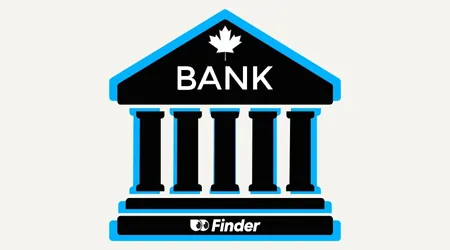
Banking statistics and trends in Canada for 2025
Explore key banking statistics and figures from the Finder: Consumer Sentiment Survey January 2025.
Read more…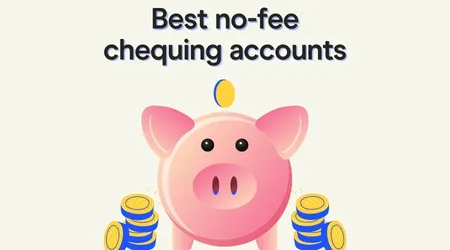
Best free (no-fee) chequing accounts in Canada
Compare the features of 8 of the best no-fee chequing accounts in Canada, and find out how to avoid transaction fees.
Read more…
16 best new bank account offers for May 2025
Earn cash, rewards points, bonus interest rates and more with these new bank account offers and promotions.
Read more…
Best youth bank accounts in Canada
Learn about the different types of bank accounts for your teenager and how to choose the right one.
Read more…
Best chequing account in Canada for 2025
Compare chequing accounts and learn about our top picks. Compare different features and see which one is right for you.
Read more…
Open a bank account online in Canada in 5 easy steps
Compare and open a bank account online in Canada in as little as 5 minutes. Learn what you need to apply and how to get started today.
Read more…More guides on Finder
-
45 tips for how to save money in Canada
Your guide to saving money on gas, groceries, utilities and everyday expenses in Canada.
-
Banking statistics and trends in Canada for 2025
Explore key banking statistics and figures from the Finder: Consumer Sentiment Survey January 2025.
-
The best banks in Canada for 2025
We compare Canada’s best banks to help you find your perfect banking match.
-
Scotiabank promotions and offers
Explore all the latest Scotiabank promotions and offers available now.
-
Beacon Money Account review
Your guide to features and fees of the Beacon Money Account for newcomers to Canada.
-
Alternatives to Tangerine Bank
Your guide to the 6 of the best Tangerine alternatives in Canada.
-
16 best new bank account offers for May 2025
Earn cash, rewards points, bonus interest rates and more with these new bank account offers and promotions.
-
Bank of Canada interest rate forecast report
Read Finder’s BoC Interest Rate Report for forecasts from some of Canada’s brightest minds in economics and learn more about how recent rate increases could affect Canada’s real estate market.
-
Open a bank account online in Canada in 5 easy steps
Compare and open a bank account online in Canada in as little as 5 minutes. Learn what you need to apply and how to get started today.

